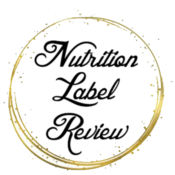In 2011, the Food Safety Modernization Act (FSMA) was enacted into law, much of which created statutes to improve not only the capacity to detect but also the capacity to prevent food safety hazards. As 2017 marks the first year of full compliance food manufactures to importers are all impacted by its’ goal of preventing the contamination of all food products. Several additions to the law will focus on food suppliers having both backward and forward traceability.
So, you may wonder how this new law impacts food packaging….
Well, the FD&C Act as amended by FSMA now categorizes food allergens as a food safety hazard that must be identified, evaluated, and controlled thus requiring assurance that the product is not adulterated or misbranded. It also requires companies to be able to access records at any point in the supply chain which can provide increased and improved response time in the event of a recall. These preventative controls have been defined in the form of supply chain programs as well as programs for ensuring label accuracy (correct printing, proofreading, managing formula changes, as well as monitoring the comingling of packaging). It is also important to remember that within the specifics of FSMA the packaging that touches food is now treated the same as food. So, any type of foil package, can, box, or plastic must be labeled with lot information, monitored for allergen cross contact, and tracked along the supply chain.
Part of a common theme of preventative controls is traceability, which has caused a dramatic increase in the use of barcodes such as GS1 128. These barcodes include the lot number which inevitably increases traceability in the event of a recall. The lot information is used to track all the way along the supply chain; from consumer all the way back to the packaging supplier if necessary. It’s amazing to think of the impact a barcode can now have on creating a little piece of mind with manufacturers when it comes to recall plans.
Also of importance is understanding that food packaging is much more than just nutrition facts panels and marketing. Each aspect of the label is an intricate behind the scenes look at the food inside. From the ingredient deck to the lot number, each part is delivering a story of who, what, when, and how this food was made. The FDA more than ever is now placing responsibility on those putting food into consumers hands and asking that companies have more controls in place to keep adulterated food out of the market. Did you know that in 2016 there were over 760 recalls initiated and of that over 300 had to do with mislabeling of allergens. Since food allergies can be so serious and often absolute avoidance of the allergen is needed, clear and accurate labeling is a must at the commercialization level. So, there is now pressure on companies to gage exactly what is in their food and to be more preventative verses just reactionary.
As you can see labeling and packaging comes with a lot of regulatory requirements and that is where we can step in to help answer questions and supply you with all your regulatory needs, so contact us today at nutritionlabelreview.com and let us take the guess work out of labeling.

